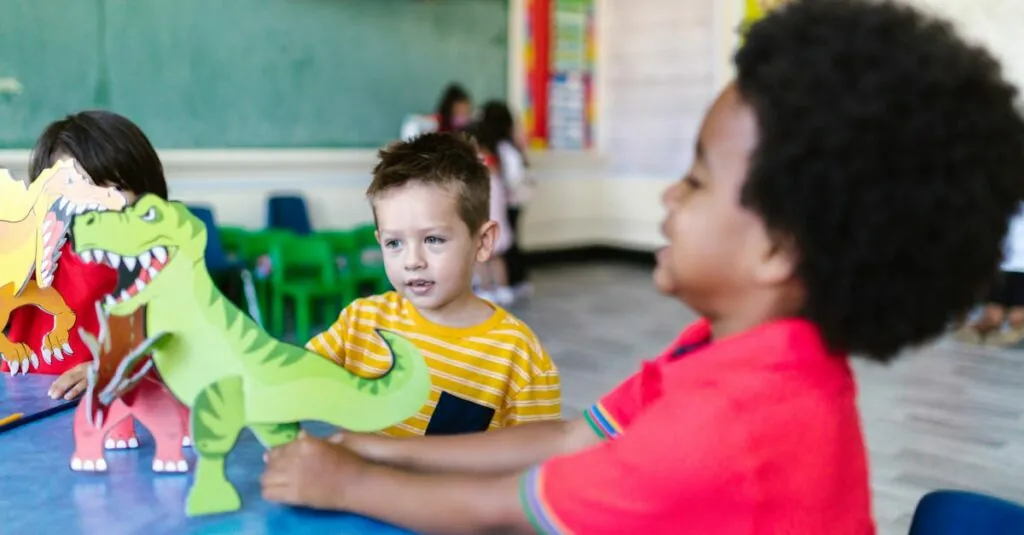Table of Contents
ToggleTransitioning from one activity to another can feel like herding cats—especially with preschoolers. These little bundles of energy thrive on routine but often need a little nudge to shift gears. That’s where fun and engaging transition activities come into play. Not only do they keep chaos at bay, but they also help little ones develop essential skills like patience and cooperation.
Importance Of Transition Activities For Preschoolers
Transition activities play a crucial role in guiding preschoolers through changes in their daily routine. These activities not only ease the shift from one task to another, but they also help in building essential cognitive skills. Developing the ability to transition smoothly enhances children’s self-regulation and communication capabilities.
Engaging preschoolers in enjoyable transition activities fosters a sense of security and predictability. This structured environment allows young children to feel more comfortable when moving between activities, reducing anxiety and behavioral issues. Implementing songs, games, or simple rituals can make transitions engaging and fun.
Implementing these activities also promotes social skills among preschoolers. Cooperation becomes a natural outcome when children participate together in transitions. They learn to wait their turn, listen to instructions, and work with peers, all while enjoying the process.
Research indicates that active engagement during transitions contributes to better focus and attention in subsequent activities. This focus leads to meaningful participation in learning experiences. Transition activities serve as a valuable tool for educators and caregivers to harness children’s energy positively.
Utilizing a variety of transition methods keeps the experience fresh and exciting. Storytelling, movement games, or rhythmic clapping can serve as effective techniques. These varied approaches cater to individual preferences, ensuring all children can engage and benefit.
Transition activities are vital for preschoolers. They support emotional regulation, enhance social interaction, and create a enjoyable atmosphere. Prioritizing these activities offers a structured pathway toward smoother transitions and enriched learning experiences.
Types Of Transition Activities
Transition activities come in various forms, each serving unique purposes. Utilizing these methods benefits preschoolers by enhancing their adaptability and engagement.
Classroom Transitions
Classroom transitions can involve songs or chants. Engaging children with rhythmic activities eases the shift from one task to another. Visual cues, like timers or charts, help preschoolers anticipate upcoming changes. Counting down the minutes signals that an activity will soon end. Incorporating interactive stories facilitates shared understanding, making transitions enjoyable. Teachers can implement simple games to encourage cooperation. Encouraging children to share what they need before moving on fosters communication skills.
Outdoor Play Transitions
Outdoor play transitions create excitement for learning outside. Setting a signal, like a bell or clapping, indicates when it’s time to gather. Groups can enjoy stretching or light movements before heading outside to transition their focus. Engaging children in a quick nature scavenger hunt promotes awareness and curiosity. Singing a short outdoor-themed song lightens the mood before outdoor play. Directing children to help each other find their gear builds a sense of teamwork.
Both types contribute to a smoother transition and help develop social skills within a structured environment.
Benefits Of Transition Activities
Transition activities significantly contribute to preschoolers’ development, providing multiple benefits in emotional and social domains. They create opportunities for young children to navigate changes effectively.
Emotional Development
Emotional development thrives when children engage in transition activities. A sense of predictability emerges, allowing them to manage anxiety during daily changes. Children gain the ability to express feelings about transitions, enhancing emotional awareness. Positive experiences during activities build resilience and a sense of security, which fosters emotional growth. It’s vital to incorporate playful elements that make children feel comfortable in their surroundings. Supportive environments, like those that use music or structured games, lead to improved self-regulation skills, helping children adapt to future changes smoothly.
Social Skills Development
Social skills development flourishes through structured transition activities. Children practice cooperation as they engage in group games that require teamwork. Communication skills improve as they listen to each other and follow directions together. Turn-taking becomes second nature when children participate in organized activities, promoting patience and respect. Friendships often strengthen during these interactions, as shared experiences create lasting bonds. Incorporating songs and storytelling enriches the social learning process, making transitions engaging and beneficial for developing essential social skills. These interactions lay the groundwork for successful peer relationships throughout their educational journey.
Tips For Implementing Transition Activities
Transition activities create seamless shifts for preschoolers, ensuring they feel secure and engaged. Effective strategies enhance the overall experience and foster essential skills.
Engaging Parents
Involving parents enhances transition activities and provides consistency. Encourage open communication by sharing transition methods used in the classroom. Provide simple resources like song lists or activity guides, allowing parents to replicate these practices at home. Regular newsletters or updates keep parents informed about changes and encourage them to participate. Cooperative involvement helps children associate transitions with both school and home environments, making adjustments feel more comfortable. Strong partnerships between educators and families empower preschoolers and reinforce positive behaviors.
Creating Consistent Routines
Establishing consistent routines lays a solid foundation for transitions. Predictable activity sequences help children understand what to expect. Develop daily schedules that incorporate transition activities, ensuring a smooth flow throughout the day. Use visual aids like charts or pictures to clarify each part of the routine, making instructions easy to follow. Gradually introducing changes minimizes anxiety and fosters adaptability. Repeated exposure to structured transitions also builds self-regulation skills. Consistency enables preschoolers to thrive during routines, making transitions less chaotic.
Transition activities play a vital role in the preschool experience. They not only ease the shift from one activity to another but also foster essential skills like emotional regulation and social interaction. By incorporating engaging methods such as songs and games, educators and parents can create a supportive environment that helps children navigate changes with confidence.
These activities build a sense of predictability, reducing anxiety and enhancing children’s ability to adapt. As preschoolers learn to cooperate and communicate during transitions, they develop friendships that contribute to their overall growth. Prioritizing these strategies ensures that transitions become enjoyable moments, paving the way for enriched learning experiences and stronger emotional resilience in young children.







